Last updated: October 17, 2024
Article
Afro-Latinidad on the Anza Trail
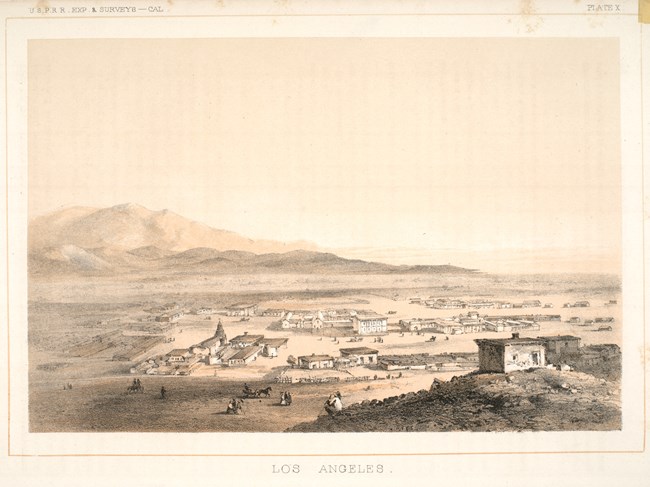
Robert B. Honeyman, Jr. Collection of Early Californian and Western American Pictorial Material. Courtesy of The Bancroft Library, University of California, BANC PIC 1963.002:0478:10—A
Afro-Latino/a/e Presence in Early California
Among the earliest non-indigenous residents of California were hundreds of people of African background who descended from enslaved peoples taken to Mexico during the fifteenth and sixteenth centuries. These Afro-Latine (other terms may be Latino, Latina, or Latinx) shaped the character of California much as Puritans shaped the character of New England. They blazed trails and established towns and ranches that grew into major cities like Los Angeles, San Diego, Monterey, and San Jose. Several Afro-Latine and their descendants amassed considerable fortunes and acquired high-ranking positions in the military and government.
Unlike the United States, where people of different ethnic and racial backgrounds were largely segregated, early nineteenth-century California was a place where Afro-Latine, mestizos, Europeans, and Native Americans integrated and frequently intermarried. In general, California provided Afro-Latine with opportunities for social, economic, and political advancement they would otherwise not have in Mexico, where special rights and privileges of the colonial caste system were limited to Spaniards of “pure blood.” In California, Afro-Latine acquired vast tracts of land and served as military officers or government officials. By contrast, most African Americans in the United States in the eighteenth and early nineteenth centuries were enslaved. Even free African Americans enjoyed few, if any, legal rights or recognition as citizens in the United States.
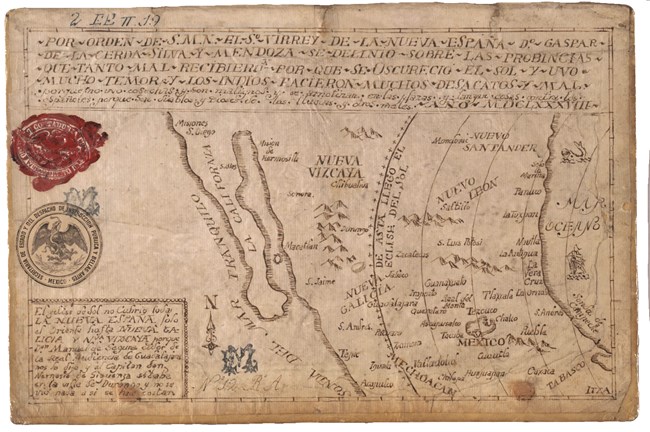
Courtesy of The Bancroft Library, University of California, Map G 04411 B1 1688 P6 Case A
Africans in Mexico
Africans entered Mexico in 1519, when Juan Garrido, a Black soldier, served under Hernán Cortés in the defeat of the Aztec empire. The Spanish enslaved Mexico’s indigenous peoples and forced them to work in mines and on haciendas. However, as the indigenous population declined, Spanish colonists soon turned toward forcefully capturing (or kidnapping) and enslaving Africans to exploit for their labor needs. Between 1580 and 1670, roughly 100,000 slaves, mostly Africans, were forced to Mexico. Perhaps as many as 50,000 Africans had been sent to Mexico before 1580; by 1645, Mexico had a slave population of 80,000.
By the eighteenth century, free Black people outnumbered enslaved people and had a noticeable presence in Mexico City, Puebla, Guerrero, and Veracruz. Others were dispersed throughout the countryside and mining centers like Culiacán, Sinaloa, and Zacatecas. Nonetheless, free Black people in Mexico—especially those in Mexico City and Puebla—faced many obstacles and social prejudice. Some cities passed laws that kept Afro-Latine from obtaining land or entering certain skilled professions. This may explain why some free Black people moved into the frontier regions of Mexico, where they encountered much less discrimination. By the eighteenth century, free Black communities had sprung up in towns and districts northeast of Mexico City in places like Rosario (now El Rosario), Mazatlán de los Mulatos (now Mazatlán), Cosala, Villa Sinaloa (now Sinaloa de Leyva), Durango (now Victoria de Durango), Culiacán (now Culiacán Rosales), Parral (now Hidalgo del Parral), and San Miguel de Horcasitas. By the late eighteenth century, Mazatlán and other peripheral towns included Afro-Latine soldiers, merchants, artisans, priests, mayors, councilmen, ranchers, and farmers.
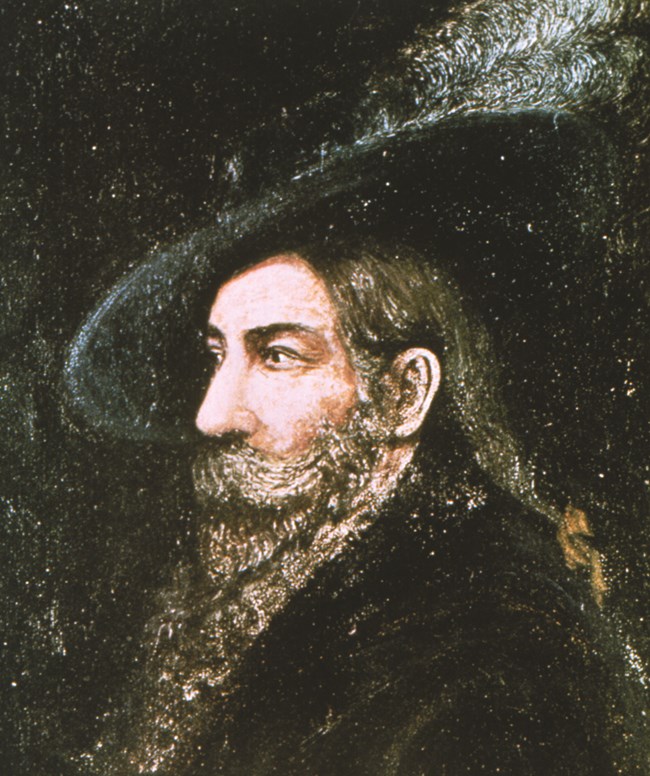
NPS
The Anza Expedition and Afro-Latine Settlement in California
So how did Afro-Latine eventually find their way to modern-day California? Answer: The Anza colonizing expedition of 1775-1776. In 1774, Spanish Captain Juan Bautista de Anza led an expedition that opened up a new supply route from northern Sonora to California. Shortly after his return to Mexico City, Anza organized another expedition that included dozens of families he recruited in Culiacán, Villa Sinaloa, Altar, and Horcasitas. These and other towns in Mexico’s northwest supplied California’s earliest colonizers.
With the establishment of the overland route, Afro-Latine migrated to California in significant numbers. By 1790, they made up nearly 20 percent of California’s population, or one out of every five residents. While European-born Spaniards controlled California society using a colorist caste system, Afro-Latine and mestizos did manage to gain some political and economic influence during the Spanish and Mexican periods of California history.
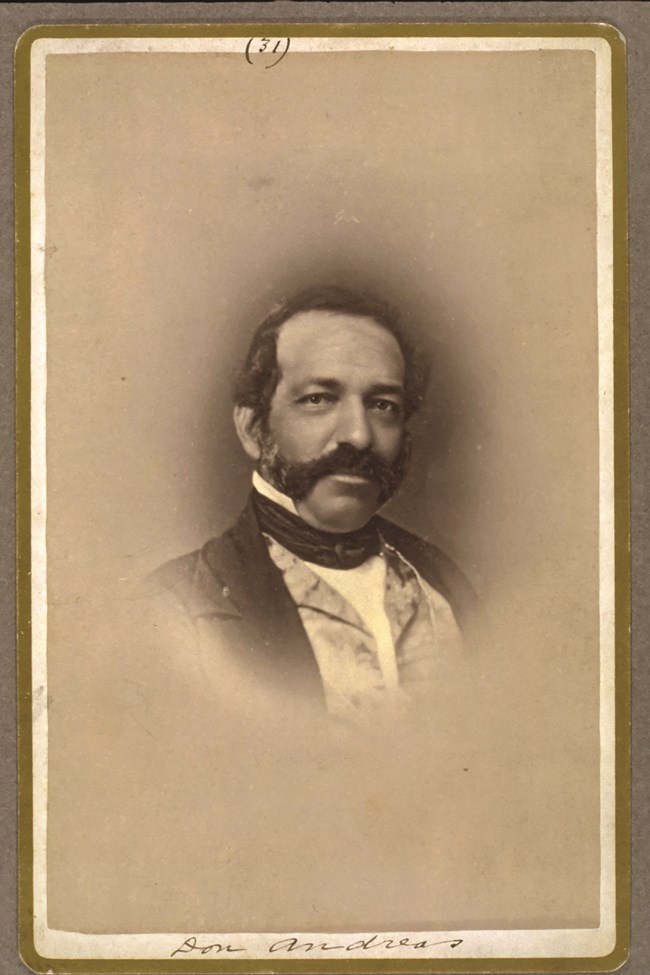
Photograph by V. Wolfenstein. Courtesy of The Bancroft Library, University of California, Portrait Collection, Pico, Andres, 1810–1876.
Prominent Afro-Latine Families in California
Some notable examples of Afro-Latine who played prominent roles in California’s development were Juana Briones, Manuel Nieto, Pío Pico, and Tiburcio Tapia. Juana Briones, whose mother and grandparents came to California with the 1775-1776 Anza Expedition, became a fixture in Yerba Buena (now San Francisco) during the nineteenth century. Briones developed a reputation for being a savvy businesswoman, landowner, humanitarian, and healer. Manuel Nieto entered Alta California in 1769 as one of the leather-jacket soldiers in Gaspar de Portolá’s expedition from Mexico. He later acquired 158,000 acres in Southern California, which included the modern cities of Long Beach, Huntington Beach, Norwalk, and Downey. At the time of his death in 1804, Manuel Nieto’s real estate and large herds of horses and “black cattle” made him the wealthiest man in California.
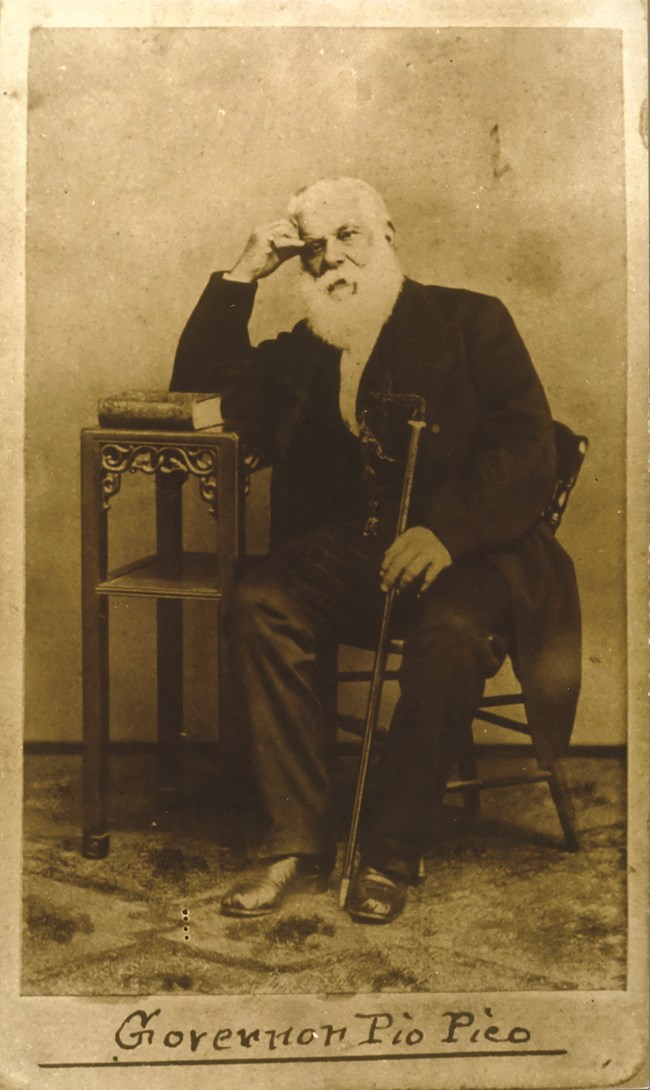
Courtesy of The Bancroft Library, University of California, Portrait Collection, Pico, Pío, 1801–1894.
Pío Pico came from a very well-known Afro-Latine family that became one of the most wealthy and powerful in Mexican-era California. In addition to his success in acquiring extensive landholdings, Pico became California’s last governor under Mexican rule. Tiburcio Tapia served as a soldier at Santa Barbara before assuming duties as corporal of La Purísima Mission (present-day Lompoc). In 1839, Tapia was granted 13,045 acres by Governor Juan Bautista Alvarado in an area east of Los Angeles called Cucamonga. By the 1840s, Tapia had become one of Southern California’s wealthier landowners and merchants. He was also politically connected and served as a member of the provincial legislature, a three-term mayor of Los Angeles, and a judge.
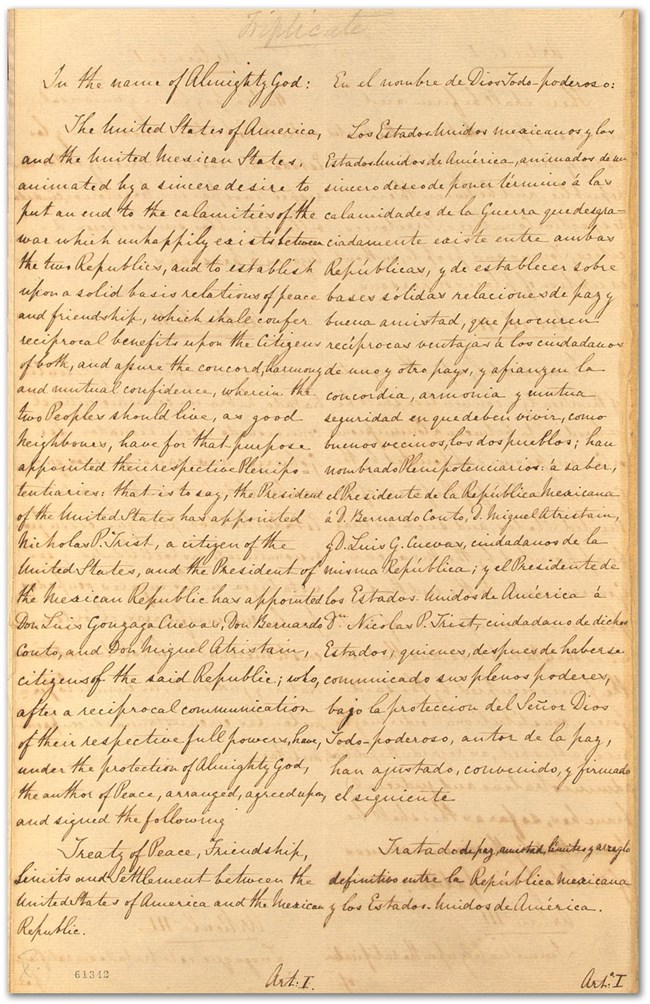
Courtesy of the Library of Congress.
United States Nationhood, Manifest Destiny, and the Decline of Afro-Latine Influence in California
Unfortunately for Afro-Latine and Mexicans living in California, dramatic changes occurred after the United States took over in 1848. Throughout the first half of the nineteenth century, the U.S. pursued an aggressive policy of westward expansion, seeking additional land for its population of land-hungry settlers. In 1846, President James K. Polk provoked a war with Mexico that many saw as nothing more than an opportunity to seize Mexico’s northern provinces (now California, Nevada, Utah, Arizona, New Mexico, and parts of Colorado, Oklahoma, and Texas). The Mexican-American War endured for two years and ended with the signing of the Treaty of Guadalupe Hidalgo in 1848. The treaty ceded all of the northern provinces to the United States. The discovery of gold that same year opened the floodgates to Anglo settlement and colonization. Thousands of Americans entered the territory and many squatted illegally on property belonging to Mexicans. Thousands of Mexicans would eventually lose their property in U.S. Courts that rejected Spanish and Mexican-era land titles. Others would be forced to sell off portions of their property or in some cases all of it to attorneys or other individuals to cover the cost of litigation.
When California was transferred to the U.S. colonial occupation, the territorial government quickly adopted laws that stripped away the rights of Mexicans, Asians, African Americans, and Native Americans. The California constitutional convention of 1849, for instance, voted to disfranchise “Indians, Africans, and descendants of Africans.” The following year, it limited membership in the state militia to “free white males,” prohibited nonwhite testimony in court cases involving whites, and adopted vagrancy laws that created a system of Native American enslavement that remained in effect until the end of the Civil War. While denying Black people the right to testify on their own behalf, the state legislature voted that Black people who had entered the state before 1850 could be detained by anyone who claimed them as ex-slaves.
Indeed, much had changed in California from the time of Anza’s arrival to the transfer of California from Mexican to U.S. colonial powers. It began as a place that afforded Afro-Latine like the Tapias and Picos a transition from poverty to prosperity, a place where they could have title to thousands of acres of land, exercise political power, and be treated with respect, although this still came at the dispossession of Native Americans living in the area of their land and sovereignty. Today, it is critical for us to understand the early history of California because we still struggle with the ongoing legacies of racial prejudice, classism, colorism, and anti-Blackness. Nearly 250 years later, Black communities, including Afro-Latine descendants, continue to thrive along the trail. We celebrate their legacy and accomplishments and honor the adversities they faced.
About the Author
The text and images presented on this page are from the “Discovering Early California Afro-Latino Presence” brochure. To request a printed copy of this brochure, please email us.
Damany Fisher, author of “Discovering Early California Afro-Latino Presence” brochure, is a native of Sacramento and received his Ph.D. from the University of California, Berkeley. He currently teaches American history at Mt. San Antonio College in Walnut, California. The information presented on this page and in the brochure is explored at greater length in Fishers’ Discovering Early California Afro-Latino Presence (Heyday Books, 2010). To order the pamphlet, visit heydaybooks.com
Edited and updated by Dr. Brittany Romanello, 2024.
Best, Leslie K. The Afro-Latino: a historical journey. Becslie Publishing, 2010.
Greene, Colleen, and Spark Eastwood Says. “Manuel Nieto Project #52Ancestors: The 1834 Breakup of Rancho Los Nietos in Alta California.” Colleen & Jeffs Roots, 10 Nov. 2015, www.cjroots.com/manuel-nieto-project-52ancestors-the-1834-breakup-of-rancho-los-nietos-in-alta-california/.
Fisher, Damany M. Discovering early California Afro-Latino presence. Heyday, 2010.
Mason, William H. The Census of 1790: A Demographic History of Colonial California. Ballena Press, 1998.
Northrop, Marie. Spanish-Mexican Families of Early California: 1769-1850, Vol. I
Salomon, Carlos Manuel. Pío Pico: the last governor of Mexican California. University of Oklahoma Press, 2011.
Tapia Adobe, Rancho Cucamonga, CA
Pío Pico State Historic Park, Whittier, CA
Whittier Museum, Whittier, CA
Tags
- golden gate national recreation area
- juan bautista de anza national historic trail
- anza expedition
- anza trail
- afro latino
- california
- juan bautista de anza
- manuel nieto
- pio pico
- juana briones
- tiburcio tapia
- treaty of guadalupe hidalgo
- mexico
- afro latinx
- afro latine
- mellon fellows
- mellon humanities fellow
- mellon humanities fellowship
- exploration
- immigration
